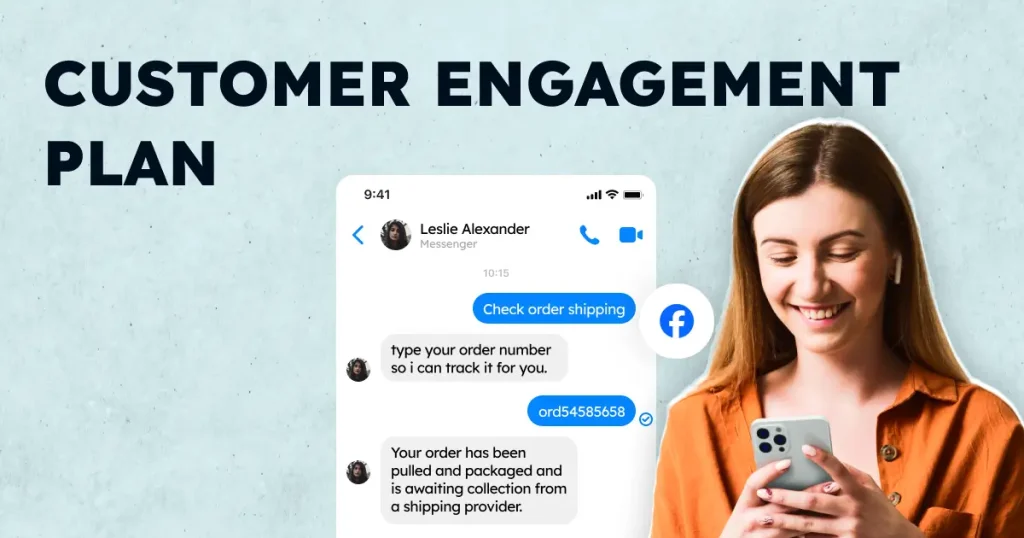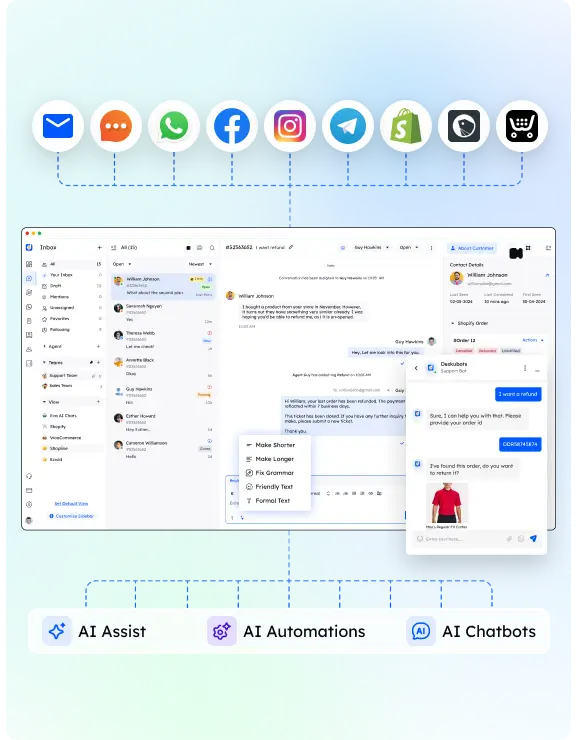Have you ever wondered why some businesses have customers who can’t stop raving about them, while others struggle to keep folks coming back? It’s not just about having a killer product or a flashy ad campaign. The secret sauce is often a well-crafted customer engagement plan. Think of it like nurturing a friendship—consistent effort, genuine interest, and a little creativity can turn casual buyers into loyal fans who stick with you through thick and thin.
In this article, we’re diving deep into what a customer engagement plan is, why it’s a game-changer for your business, and how you can build one from scratch. Whether you’re a small business owner or a seasoned marketer, you’ll walk away with actionable steps, real-world examples, and advanced strategies to boost customer loyalty and growth. For more insights on customer relationships, check out Desku’s blog on customer engagement strategies. Ready to transform how your customers see your brand? Let’s get started!
What Is a Customer Engagement Plan?
A customer engagement plan is your strategic playbook for connecting with customers in ways that spark interest, build trust, and encourage long-term relationships. It’s not just about selling—it’s about creating interactions that make customers feel valued, heard, and excited to stick around. From personalized emails to social media chats, it’s the roadmap that guides every touchpoint in the customer journey. Curious about the basics? Explore what customer engagement really means.
Imagine it as the bridge between your brand and your audience. Without it, you’re shouting into the void, hoping someone listens. With it, you’re starting a conversation that keeps customers coming back.
Why Should You Care About Customer Engagement?
Why does this matter? Because engaged customers are the heartbeat of a thriving business. Research from Gallup shows that companies with strong customer engagement strategies see a 23% boost in profitability and revenue compared to those who don’t. Plus, engaged customers are more likely to spread the word—think free marketing from happy fans.
But it’s more than numbers. It’s about building a bond. Engaged customers forgive slip-ups, share honest feedback, and become your brand’s biggest cheerleaders. In a world where competition is fierce, a solid customer engagement plan could be your edge. Want to measure this impact? Check out Desku’s guide on customer engagement scores.
The Problem: Why Customer Engagement Isn’t Always Easy
Let’s face it—keeping customers engaged isn’t a walk in the park. Many businesses hit roadblocks that stop them from creating those meaningful connections. So, what’s holding them back?
Common Roadblocks Businesses Face
Not Knowing Your Customers Well Enough
Ever tried guessing what someone wants without asking them? It’s a shot in the dark. If you don’t understand your customers’ needs, preferences, or pain points, your engagement efforts can feel generic or downright irrelevant.
Inconsistent or Scattered Communication
Picture this: one day you’re flooding customers with emails, the next you’re silent for weeks. Inconsistency confuses people and breaks trust. Without a steady rhythm, your audience might tune out—or worse, forget you exist. Learn more about streamlining this with Desku’s email management strategies.
Stretched Resources
Especially for small businesses, time and money can feel tight. Crafting a full-on customer engagement plan might seem like a luxury when you’re juggling a dozen other priorities. But here’s the kicker: neglecting it can cost you more in lost customers down the line.
What Happens When Engagement Falls Flat?
The fallout from poor engagement hits hard:
- Loyalty Takes a Hit: Customers who don’t feel connected are quick to jump ship to a competitor.
- Retention Drops: It costs five times more to attract new customers than to keep existing ones, per Forrester. Low engagement means higher churn.
- Reputation Suffers: Unhappy or disengaged customers might vent online or to friends, leaving your brand with a black eye.
Solutions: How to Build a Winning Customer Engagement Plan

Good news—you don’t need a massive budget or a marketing degree to create an effective customer engagement plan. It’s about strategy, not size. Here’s a step-by-step guide to get you there.
Step 1: Get to Know Your Audience Like a Best Friend
You can’t engage someone you don’t understand. Start by digging into who your customers are.
- Build Buyer Personas: Create detailed profiles—age, interests, challenges, goals. Are they busy moms looking for quick solutions or tech-savvy teens chasing trends?
- Collect Feedback: Use surveys, reviews, or a simple “What do you think?” email. Tools like Google Forms or Desku’s feedback guide make this a breeze.
Checklist:
- List 3-5 key traits of your ideal customer.
- Send out a quick survey this week to gather insights.
Step 2: Set Goals That Guide Your Plan
What’s the endgame? Clear objectives keep your customer engagement plan on track.
- Use SMART Goals: Specific, Measurable, Achievable, Relevant, Time-bound. Example: “Increase email open rates by 15% in 3 months.”
- Tie to Business Wins: Want more sales? Better reviews? Align your engagement goals with what keeps your business humming.
Step 3: Pick the Perfect Channels
Where do your customers hang out? Meet them there instead of guessing.
- Social Media: Instagram for visuals, LinkedIn for pros—match the platform to your crowd. See Desku’s social media engagement tips.
- Email: A goldmine for personalized updates and offers.
- Mobile: Push notifications or SMS for instant reach—explore SMS vs. WhatsApp.
- In-Person: Events or pop-ups for that personal touch.
Pro Tip: Start with 2-3 channels you can nail rather than spreading yourself thin.
Step 4: Create Content They Can’t Ignore
Content is your engagement fuel. Make it valuable and fun.
- Educate: Share tips or how-tos (e.g., “5 Ways to Use Our Product Daily”).
- Entertain: Tell stories or crack a joke—keep it light and memorable.
- Inspire: Highlight customer wins or your brand’s mission.
Example: A coffee shop could post a video of a barista teaching latte art—useful and engaging.
Step 5: Make It Personal
Generic messages? Yawn. Tailor your approach to stand out.
- Personalize with Data: Use names, past purchases, or browsing history. “Hey Sarah, loved your last order—here’s something new!”
- Segment Your List: Group customers by behavior or interests for laser-focused content. Learn more in Desku’s customer communication guide.
Step 6: Measure What Matters
You can’t improve what you don’t track. Keep an eye on your progress.
- Key Metrics:
- Email open/click rates
- Social media likes, shares, comments
- Customer satisfaction (CSAT) scores—see how to improve CSAT
- Tools: Google Analytics, Mailchimp, or Desku’s help desk solutions.
Checklist:
- Choose 3 metrics to track monthly.
- Set up a free analytics tool this week.
Examples: Customer Engagement Plans That Work
Need inspiration? Check out how these brands nail their customer engagement plans.
Case Study 1: Starbucks – Brewing Community on Social Media
Starbucks turns coffee into a lifestyle with Instagram posts that invite fans to share their #StarbucksMoments. They repost user photos, reply to comments, and run seasonal campaigns (hello, Pumpkin Spice Latte hype). Result? A loyal community that feels part of the brand.
Case Study 2: Amazon – Personalized Email Magic
Amazon’s emails hit your inbox like they’ve read your mind—recommendations based on what you’ve browsed or bought. Their segmentation game is strong, driving 35% of their revenue from personalized suggestions, according to McKinsey.
Case Study 3: Peloton – Fitness Meets Connection
Peloton’s online platform isn’t just workouts—it’s a community. Live classes, leaderboards, and shoutouts from instructors keep users hooked. Their engagement plan blends tech and human connection for a sticky customer base.
Advanced Tips: Level Up Your Customer Engagement Plan
Got the basics down? Here’s how to take your customer engagement plan to pro status.
Tap Into Tech
AI Chatbots
Set up a chatbot for 24/7 support. Answer FAQs or guide purchases—think of it as a tireless assistant. Explore Desku’s guide to customer service chatbots.
Augmented Reality (AR)
Let customers “try before they buy” with AR—like IKEA’s app showing furniture in your room.
Build a Tribe
Exclusive Groups
Launch a VIP club or forum for top fans. Offer perks like early access or insider tips.
Events & Webinars
Host a virtual Q&A or an in-person meetup. Connection breeds loyalty.
Play the Game
Rewards Programs
Points for purchases or referrals—like Sephora’s Beauty Insider—keep customers coming back. See customer loyalty program ideas.
Challenges
Run a contest (e.g., “Share your best recipe using our product”). Fun = engagement.
Conclusion
A stellar customer engagement plan isn’t just a nice-to-have—it’s your ticket to turning one-time buyers into lifelong advocates. By knowing your audience, setting smart goals, picking the right channels, crafting killer content, personalizing every step, and tracking results, you’re building a strategy that fuels growth and loyalty.
Quick Recap
- Engagement drives loyalty and profits—don’t sleep on it.
- Overcome hurdles like poor customer insights or limited resources.
- Follow the 6-step plan to create connections that stick.
Your Next Move
Start small: pick one step from this guide—like surveying your customers—and run with it. Watch how even tiny tweaks can spark bigger wins.
Call to Action
Ready to craft your own customer engagement plan? Try Desku’s free tools to kickstart your strategy and start building relationships that last. Your customers—and your bottom line—will thank you!
FAQs
- How long does it take to see results from a customer engagement plan?
You might notice small wins (like higher email opens) in a month or two, but deep loyalty takes 6-12 months of consistent effort. Track progress with customer service metrics. - What if my customers aren’t on social media?
No sweat—focus where they are. Try email, SMS, or even old-school mail if it fits your crowd. See Desku’s WhatsApp marketing tips. - How do I avoid coming off as annoying or spammy?
Keep it valuable and relevant. Ask yourself: “Would I enjoy getting this?” If not, tweak it. Check out email best practices. - Do I need to be on every channel to engage customers?
Nope! Master a few key ones where your audience hangs out instead of juggling too much. Learn more about omnichannel strategies. - How do I know if my customer engagement plan is paying off?
Look at ROI through sales growth, retention rates, or customer lifetime value. Metrics don’t lie! Dive into measuring customer satisfaction.


